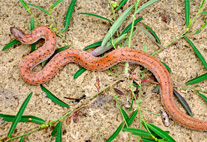Abstract
The genus Diapus Chapuis was erected (Chapuis 1865) for four species of pinhole borer (Curculionidae: Platypodinae) from the Oriental region and New Guinea. It was distinguished from other platypodine genera primarily by the widely separated procoxae (Chapuis 1865). Hopkins (1914) designated Diapus quadrispinatus Chapuis, 1865 as the type species of the genus. The genus is currently placed in the platypodine tribe Tesserocerini, subtribe Diapodina (Alonso-Zarazaga & Lyal 2009). Only two genera are included in the Diapodina, Diapus and Genyocerus Motschulsky (Alonso-Zarazaga & Lyal 2009, Jordal 2015). Diapus is distinguished from Genyocerus by the following characters (Wood 1993, Beaver & Liu 2007): 1. In Diapus, the scutellum is narrower and more sunken, not flush with the elytral surface posteriorly as it is in Genyocerus. 2. The mycangial pores of Diapus are sometimes fused to form a transverse or crescentic bar on each side of the midline of the pronotum. This does not occur in Genyocerus. 3. The antennal club of Diapus sometimes has a median testaceous strip lacking sensillae on the anterior face. This strip is never present in Genyocerus. 4. The males of Diapus never possess a membranous extension of the apical margin of the fourth abdominal ventrite, present in some species of Genyocerus. 5. The females of Diapus often bear deciduous mandibular appendages, which are never present in Genyocerus (Beaver & Liu 2007).

